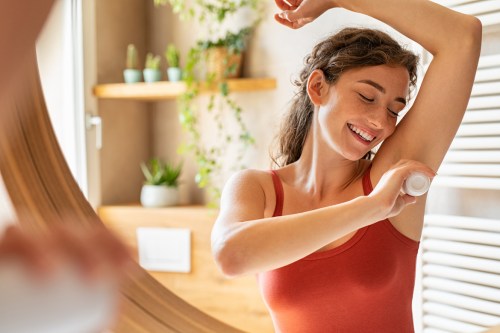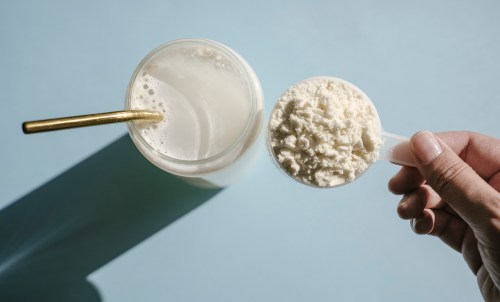Our editors independently select these products. Making a purchase through our links may earn Well+Good a commission
Like lotion and cream, antiperspirant and deodorant are often used interchangeably since they serve similar functions. But there are some key differences when it comes to antiperspirant vs. deodorant that are worth knowing in order to ensure you’re using the one best suited to your ultimate goal—B.O. blocking or sweat stopping—as well as when you prefer to apply your skin-care products.
Experts in This Article
board-certified dermatologist at Medical Dermatology and Cosmetic Surgery in New York
These distinctions change the way each product affects your skin and how effective it can be in providing the specific results you’re looking for. So if you’ve never tried one or the other, this intel may be enough to get you to give it a go.
What is an antiperspirant?
“Antiperspirants plug up the sweat glands to directly block the release of sweat, thereby reducing wetness,” explains Marisa Garshick, a board-certified dermatologist based in New York City.
Right now, most antiperspirants are aluminum-based, and Dr. Garshick suggests finding one formulated with aluminum chloride. “While different aluminum salts exist, aluminum chloride is often found in prescription antiperspirants and may also be available in some over-the-counter formulations,” she says. Personally, she recommends Certain Dri Prescription Strength Clinical.
When it comes to usage, the best time to apply an antiperspirant is way earlier than you may think. “It’s most effective to use an antiperspirant at night when your sweat glands are not active or filled with sweat and are thus able to absorb more of the aluminum,” Dr. Garshick explains.
Just be sure not to put it on wet skin. “In fact, I recommend ensuring that the area is completely dry prior to application to minimize irritation, which tends to be easier to do at night, too,” Dr. Garshick continues.
What is a deodorant?
Simply put: “Deodorants are designed to mask odor, which is often associated with sweating,” says Dr. Garshick. Alone, without antiperspirant, they may still leave you sweaty. And unlike antiperspirant, You’ll usually apply deodorant in the morning, or as needed throughout the day.
This Parisian Skincare Brand Is Launching in the United States for the First Time—Here’s What a Derm Wants You to Know

We’re Calling It: Cleansing Balms Are the Face Wash of the Future—Here Are 3 to Add to Your Cart

This Is the One Product That Scarlett Johansson Always Keeps in Her Purse and on Her Bedside Table

As for the kind of deodorant, there are chemically-based and natural options.
Antiperspirant vs. deodorant: which to choose
“For someone who suffers from hyperhidrosis [excessive or uncontrollable sweating] or is concerned about sweat and moisture buildup, it is best to use an antiperspirant,” says Dr. Garshick. “While those who are just bothered by odor may find a deodorant to be sufficient to help mask the odor.”
Most often, though, you’ll benefit by including both antiperspirant and deodorant in your hygiene regimen, since the combination of the two will help you address both odor and sweating and yield the most effective results possible.
How to apply them together
If you are using deodorant and antiperspirant as two separate products, apply the antiperspirant at night and use deodorant in the morning. But it’s possible to find two-in-one products that are a combo of deodorant and antiperspirant, and those are best used at bedtime, says Dr. Garshick.
Oh hi! You look like someone who loves free workouts, discounts for cutting-edge wellness brands, and exclusive Well+Good content. Sign up for Well+, our online community of wellness insiders, and unlock your rewards instantly.
Sign Up for Our Daily Newsletter
Get all the latest in wellness, trends, food, fitness, beauty, and more delivered right to your inbox.
Got it, you've been added to our email list.








